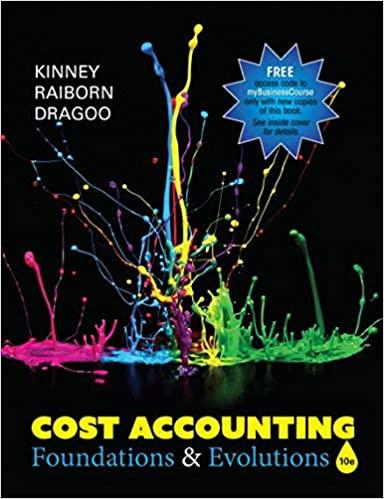Ten years ago, based on a pre-tax NPV analysis, Santes Sporting Goods decided to add a new
Question:
Ten years ago, based on a pre-tax NPV analysis, Sante’s Sporting Goods decided to add a new product line. The data used in the analysis were as follows:
Discount rate ........... 10%
Life of product line ....... 10 years
Annual sales increase
Years 1–4 ............$115,000
Years 5–8 ............$175,000
Years 9–10 ..........$100,000
Annual fixed cash costs ..... $20,000
Contribution margin ratio ..... 40%
Cost of production equipment ....$130,000
Investment in working capital ... $10,000
Salvage value .......... $0
Because the product line was discontinued this year, corporate managers decided to conduct a postinvestment audit to assess the accuracy of their planning process. Actual cash flows generated from the product line were found to be as follows:
Actual Investment_______________________________
Production equipment .........$110,000
Working capital ............ 17,500
Total ...............$127,500
Actual Revenues_______________________________
Years 1–4 .............$120,000
Years 5–8 ............. 200,000
Years 9–10 .............. 103,000
Actual Fixed Cash Costs_________________________
Years 1–4 ............. $15,000
Years 5–8 ............. 17,500
Years 9–10 .............. 25,000
Actual Contribution margin ratio ..... 35%
Actual Salvage value ......... $6,000
Actual cost of capital .......... 10%
a. Determine the original projected NPV on the product line investment.
b. Determine the actual NPV of the project based on the postinvestment audit.
c. Identify the factors that are most responsible for the differences between the projected NPV and the actual postinvestment audit NPV.
Contribution margin is an important element of cost volume profit analysis that managers carry out to assess the maximum number of units that are required to be at the breakeven point. Contribution margin is the profit before fixed cost and taxes... Salvage Value
Salvage value is the estimated book value of an asset after depreciation is complete, based on what a company expects to receive in exchange for the asset at the end of its useful life. As such, an asset’s estimated salvage value is an important... Cost Of Capital
Cost of capital refers to the opportunity cost of making a specific investment . Cost of capital (COC) is the rate of return that a firm must earn on its project investments to maintain its market value and attract funds. COC is the required rate of...
Step by Step Answer:

Cost Accounting Foundations And Evolutions
ISBN: 9781618533531
10th Edition
Authors: Amie Dragoo, Michael Kinney, Cecily Raiborn





